A party to celebrate the christening of the daughter of John Kraincuik on August 28, 1913 on a farm near Avonlea, Saskatchewan took a terrible turn when a fight broke out and a man was killed. The man who died was named Jon Paicu. The men accused of causing his death were Nicolai Cojocari, his brother Ion Cojocari and their friend Mordari Puscar.
The public record of the events can be found at the Library and Archives Canada within RG18-F-2, Volume 3245, File HQ-680-F-1, “John Cojocari, Nikoli Cojocari and Mordari Puscar – Avonlea, Saskatchewan – Manslaughter in the death of John Peicy” that contains a mix of documents spanning ninety-five pages that while far from complete is nevertheless an interesting peek into a criminal investigation, state of 1913 justice and the culture of Romanian immigrants living around Avonlea, Saskatchewan. You have to do some reading between the lines. If you want to see all of the official documents we have provided them to you here on Google Drive.
While there are some holes and contradictions in this official record below is our summary.
Summary
It was alleged that Nicolai Cojocari, his younger brother Ion Cojocari and their friend Mordari Puscar severely beat a known troublemaker, Jon Paicu, at a party on a neighbor’s farm near Avonlea, Saskatchewan. Jon Paicu died of his injuries two days later. The accused were arrested and jailed.
After a month behind bars a trial was held in Weyburn, Saskatchewan. The prosecutors were frustrated by a lack of evidence, reliable witnesses and poor police work. The charges at trial were dismissed because of the lack of evidence as the Saskatchewan Attorney General had feared and the men were released on October 1, 1913.

Both the Royal Northwest Mounted Police (R.N.W.M.P.) and the Attorney General wanted to attempt to prosecute again and began more investigation.
Ten months later the R.N.W.M.P. had completed their investigation. They found that the Cojocari brothers were known criminals in the region and that many of the locals feared reprisals from them if they testified. The Crown felt that the violence of the crime and the witnesses that were not afraid to come forward would be enough to convict. The three men were re-arrested and put on trial on August 11, 1914 only to have the case dismissed again because of the lack of evidence.
The full story
The party for the christening of the daughter (Lena?) of John Kraincuik on Thursday August 28, 1913 began in the afternoon on the farm of Nick Paicu located at NW-13-10-23-W2, Elmsthorpe No. 100 Municipality, Saskatchewan, neighbour to John Kraincuik. According to a newspaper article the event was attended by about fifty (50) people and alcohol was consumed in abundance.

On that day Nicolai Cojocari (27y), one of the accused, likely attended the celebration with his wife Garafira (25y) and three sons George (3y), John (2y) and Dimitri “Dan” (9m). At the time Garafira was four months pregnant with their forth child, Verona “Vera”. They all lived together on their nearby homestead located on NE-03-10-23-W2, Elmsthorpe No. 100 Municipality, Saskatchewan which is adjacent to the land of his brother Ion.

Nicolai’s younger brother Ion Cojocari (24y), also accused, most likely attended the party with his wife Maranda (30y) and three children Vasile “Wesley” (3y), George (1y) and Aspazia “Ruby” (3m). They lived on their nearby homestead NE-02-10-23-W2, Elmsthorpe No. 100 Municipality, Saskatchewan which is adjacent to the land of his brother Nicolai.

As evening was approached there was already some sign of some trouble as a fight broke out between two Paicu brothers, Jon and Tudar at their farm prior to their attending the celebration at the neighbouring (across the road to the west) farm of John Kraincuik at NW-14-10-23-W2, Elmsthorpe No. 100 Municipality, Saskatchewan. This fight was very important in deliberating the evidence months later at trial.
Note to readers: The Saskatchewan Homestead records (Ref: S 42.2269969) show that the NW-14-10-23-W2 land was registered to 'Vasile Krainicuik' (b:1889 - d:1973). Who was John to Vasile? A son or a brother?
Note to readers: The Saskatchewan Homestead records (Ref: S 42.2354466) show that the SE-14-10-23-W2 land was registered to 'John Kroiniciuk'. I was looking for a grave just to check the spelling of the last name. I was only able to find a John Krainiciuc (b:1878 - d:1951) in New York state. Do you know if this is the same guy? Do you know how the family settled on a spelling for their last name?
By the early evening the dinner was over and things were being cleaned-up. The celebration moved across the road to the farm of John Kraincuik at his invitation although witnesses overheard Mr. Kraincuik tell Jon Paicu to stay home because he was worried he would cause trouble. Police would later corroborate that Jon Paicu was a known troublemaker.
The party and dancing was underway at the Kraincuik farm when Jon Paicu was seen with a short length of hose filled with lead or similar to use in a fight. The testimony of the witnesses starts to get a little cloudy as to what happened next.
A number of witnesses say Jon Paicu tried to start a fight with John Cojocari and that Cojocari didn’t want to fight. Some witnesses say that Jon Paicu then tried to start a fight with Mordari Puscar. From there the testimony said that John Cojocari began fighting Paicu and that he, Cojocari, took the weapon away. What followed was a beating of Jon Paicu delivered by John Cojocari, Nicolai Cojocari and Mordari Puscar.
Some witnesses said that Paicu was being kicked while he was down on the ground. Some said he wasn’t. Some witnessed Nicolai Cojocari pick up a large stone and throw it down onto Paicu. Some said he didn’t. What the majority of the witnesses said is that they didn’t get a clear enough look in order to testify with certainty as to what happened. Gavril “Gabriel” Krasiun Sr. (listed as Gabriel Krasion) is said to have broken the fight up and when it was over Jon Paicu lay badly injured and barely conscious.
Jon Paicu was carried across the road to the stable of Nick Paicu by Stefan “Steve” Donison and another man. He was barely conscious and by late that evening his brother Nick Paicu thought that Jon’s condition was growing worse and took him by buggy the 24km (15mi) to Avonlea to see a doctor.
Paicu seen by Doctors
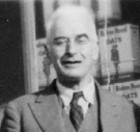
In Avonlea Jon Paicu was seen by Dr. Henry Dunnett at his office through the early morning hours. Nick Paicu fetched the Royal Northwest Mounted Police (R.N.W.M.P.) and both he and his injured brother Jon gave statements. By noon Dr. Dunnett believed that he had done what he could and Nick then moved Jon to a room at the King George Hotel in Avonlea.
Around 7:00pm Nick Paicu summoned Dr. Dunnett to the hotel to attend to John whose condition had grown worse. Dr. Dunnett had Jon Paicu moved back to his office. By 11:00pm Jon’s condition was becoming critical and a surgeon, Dr. A.H. Singleton was summoned from the town of Rouleau 30km (19mi) away. Dr. Singleton arrived about two hours later at 1:00am. The police had already begun arresting the three accused.
According to the medical testimony Jon Paicu died at 3:00am August 30, 1913 at the age of twenty-three (23) in the office of Dr. Dunnett. The autopsy later performed by Dr. McKean from Rouleau would conclude that Jon Paicu died from a ruptured intestine caused by violent trauma.
The R.N.W.M.P. in Avonlea notified their regional Depot in Moose Jaw of the arrests and a young Englishman by the name of Constable A.J. Hammond was dispatched from Moose Jaw to take charge of the prisoners and the investigation. Constable Hammond traveled by train from Moose Jaw to Rouleau, then rented a car and driver and made his way to Avonlea to perform further investigation and to bring the prisoners back to Moose Jaw Jail.

In a short number of days following the death of Jon Paicu his family and friends would have gathered on a September day at the nearby Saint Peter and Paul Romanian Orthodox Church for his funeral and burial in the Cemetery.
The three accused spent the next month first in the Moose Jaw Jail then later the R.M. Regina Prison. Police reports were filed and internal memos flew within the R.N.W.M.P. and between the R.N.W.M.P. and Crown Prosecutor. The Crown grew worried.
The arrest warrants were not properly filed and had to be reissued. The amount of information contained in the police reports and witness accounts were very slim and the Crown Prosecutor worried that the trial date of Oct 1, 1913 was approaching too fast. He requested more information but it didn’t come. A last minute telegram was sent requesting that Constable Hammond travel immediately to meet directly with the Attorney General to give evidence in person before the trial. There is no information which states whether Constable Hammond was able to meet with the Attorney General before the trial.
The first trial
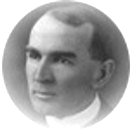
The trial took place in Weyburn on only the second day of business for the newly established Supreme Court. The Judge listened to the sparse evidence and declared the police handling of the case to be “scandalous”. All charges were dismissed and the accused were released. There are a couple of mentions in the records that the Paicu family was trying to bring a civil suit against the accused but there is no information about what happened.
Following the trial the Saskatchewan Attorney General delivered a reprimand to the R.N.W.M.P. on their poor performance. Within the R.N.W.M.P. dissatisfaction flowed and they vowed to re-open the case. It was at this point that Constable Hammond quit the R.N.W.M.P.. We don’t know why.
Quiet enquiries
On November 19, 1913 the Moose Jaw R.N.W.M.P. Depot sent word down to the Avonlea detachment that they were to make “quiet enquiries from time to time” without officially re-opening the case. Four months later on March 16, 1914 the Moose Jaw Depot asked for an update in the form of a full report. A couple of weeks later the Avonlea detachment revealed that ‘quiet enquiries’ had not worked but that they have heard enough rumour to believe that the truth was that the Cojocari brothers started the fight. Avonlea R.N.W.M.P. then asked the Moose Jaw Depot, Regina Depot and the Attorney General to send back copies of all reports. In an age without photocopiers, fax machines, email or computers you can imagine what a large request that was.
Another month later on April 22 the R.N.W.M.P. must have been pleased by the information that finally came back from the Avonlea detachment because they assigned a senior officer, Detective Sergeant J. B. Hall, to the investigation. He then re-interviewed all witnesses, visited the crime scene, reviewed all evidence and created a full and proper report to his superiors. He was even so thorough as to hunt down and interview the former-Constable Hammond.
Detective Sergeant Hall was horrified to discover that former-Constable Hammond hadn’t expended much effort on investigating the case because he (Hammond) felt that:
“It’s a good thing that Peicu (sic) did get what was coming to him.”
Constable A.J. Hammond, R.N.W.M.P.
The R.N.W.M.P. superiors at the Regina Depot on reading that Constable Hammond was on-record as saying that the death of Jon Paicu was a ‘good thing’ called the conduct of Constable Hammond “reprehensible”.
The new report was filed on May 18, 1914 (click here to read) and it contained much new but troubling evidence. The investigating officer concluded in his report that the brutality shown by the new evidence should enable the case to be re-tried but he was concerned by what he had learned about the Cojocari brothers during his investigation.
Leaders of a certain element
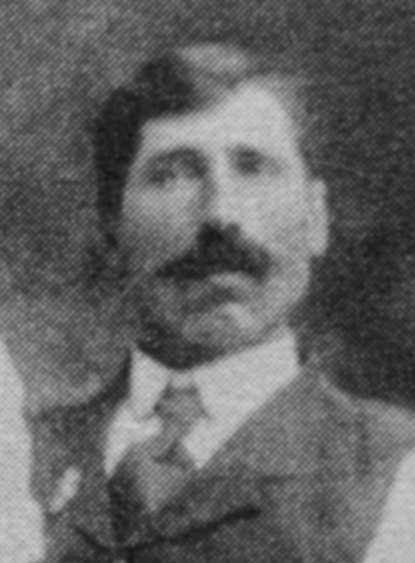
Detective Sergeant Hall had discovered that the Cojocari brothers were “…leaders of a certain element … in that district”. He did not level any accusations as to what criminal behaviour they might have been responsible for but he states they were “…from time to time causing considerable trouble.” A statement given by Constantin Popp said that he knew the Cojocari brothers in Romania as well and said they were often in trouble with the law there too. Detective Sergeant Hall believed that their reputation had intimidated some of the witnesses – some witnesses confessed that they feared being “burnt-out” as happened to Constantin Popp who must have had a disagreement with the Cojocari brothers in the past. It was also found that some of the witnesses had changed their stories from their original statements. Making the investigation even more difficult, Detective Sergeant Hall was unable to speak with a couple of the original witnesses who had left the region and left no forwarding contact information.

Detective Sergeant Hall believed that witnesses that supported or feared the Cojocari brothers altered their stories to say that they really didn’t see much of the fight. But there were still some people willing to give statements which implicated the three men in the death of Jon Paicu. Detective Sergeant Hall recommended that the men be arrested and face trial again. His superiors agreed and warrants were issued for John Cojocari, his brother Nicolai Cojocari and Mordari Puscar. At the end of July 1914 when the police arrived at their farms to arrest them they couldn’t find them.
The RNWMP have long heard rumours about how the Cojocari brothers were going to make a run for the USA but nothing ever came of it. However on July 29 Pete Craneian of Dahinda, Saskatchewan reported to the RNWMP that the Cojocari were leaving for the USA and he was afraid that they were taking horses that they still owed him money for. There is a flurry of activity by RNWMP in southern Saskatchewan as Constables were sent out to look for any group of Romanian’s travelling the area, possibly toward the border crossing south of Wood Mountain, Saskatchewan. Given that the Constables were only supplied with names and vague descriptions it was inevitable that they followed many false leads. The reports don’t say what happened but the inference is that the Cojocari brothers were not trying to flee to the USA and they were apprehended on August 3, 1914 in the Viceroy, Saskatchewan area.
The second trial

The three men are were again in jail but only for eight days. On August 11, 1914 a preliminary hearing was held. Witnesses gave testimony and again the statements had changed from those previously given and removed guilt from the three accused. In addition to interpreting the testimony of the witnesses, the judge also weighed the argument that Jon Paicu’s injury could have come from the fight he had with his brother Tudar earlier in the evening before his fight with the accused. The court again dismissed the case for lack of evidence.
In the days following the verdict the R.N.W.M.P. and the Attorney General’s office exchanged memos which stated that while they felt the three accused were guilty they were likely to never be convicted without witnesses coming forward with the truth.
The R.N.W.M.P. Officer Commanding Moose Jaw wrote in a final memo about the case to the Officer Commanding Regina on August 14 (click here to read):
“The witnesses all had some excuse to explain why they did not see what happened during that quarrel or fight. This indicates that the injury to John Peicu (sic) may have been caused at that particular time and that the witnesses are lying to protect the Cojocaris and Puscar. I have had previous experience with this class of people in which they have appeared to act on the principle that a live friend was more worthy of support than a dead one. I am also of the opinion that they are very clever liars. Perhaps the most important consideration is that there, apparently, were none other than Roumanians (sic) present at the gathering and that the Roumanians (sic) cannot be relied upon to give truthful evidence.”
RNWMP Officer Commanding Moose Jaw, August 14, 1914
The final document dated October 3, 1914 is a letter from the Crown Prosecutor who agreed with the R.N.W.M.P. position. In the opinion of the Crown Prosecutor, since it was unlikely that witnesses would give evidence proving guilt and with no new evidence forthcoming they recommended no further action be taken.
Our observations
In 1913-1914 when this story took place, Saskatchewan was still a young province having only been created seven years earlier in 1905. The R.N.W.M.P. had only been tasked with bringing order to the west less than forty years before beginning in 1874. While ‘order’ had been brought to the region things had not progressed great leaps from the days of wooden forts and the whiskey trade by 1913.

Travel between cities and large towns was completed by train as the roads of the time were little better than trails. While cars existed by this point they were rare and even the R.N.W.M.P. in the above account were hiring local car owners to drive them between towns where trains didn’t go. Many times in the above story the officers were on horseback as they traveled to gather witness statements or searched for people.
Phones did exist for a privileged few in 1913 but some of the documents revealed that phone lines were often down for long periods. As a result some of the documents were telegrams likely sent by telegraph using morse code. Certainly a lot of the documents were typed on typewriter making multiple copies using carbon paper and then probably sent by mail on the train to it’s destination – new copies requiring to be made by completely re-typing documents.
Regarding the “reprehensible” position of Constable Hammond that Jon Paicu got “…what was coming to him.” We can say that this sort of opinion on justice was not unheard of in the early days of the country. In our family history search we have browsed hundreds of early newspapers and have seen a number of stories reported on violent deaths where the accused is found not guilty because the dead person was judged to have been, paraphrasing here, such a bad person that someone was bound to kill them eventually. The death of the bad person was viewed as generally beneficial.

The doctor who attended to Jon Paicu, Dr. Henry Waters Dunnet, was well known in the Avonlea area and had his memory honoured in 1967 by the creation of Dunnet Regional Park near Avonlea Saskatchewan as a project for Canada’s 100th birthday. Dr. Dunnet was also honoured for his service in 1949 when a northern Saskatchewan lake was given his name.
The Government of Saskatchewan eHealth website lists two death certificates (#2554 and #3945) for a Jon Paicu, both dated August 30, 1913.
At the Saint Peter and Paul Romanian Orthodox Church Cemetery (the original cemetery, not the one in Kayville) there is a grave for a “Jon Paicu” born October 20, 1892 and died August 26, 1913 (21 years old). The dates and Jon’s age based on those dates are quite similar to those in the official reports which listed his age as twenty-three (23). We are inclined to believe that this is the grave of the victim in this account. See Find-a-grave (www.findagrave.com/memorial/147946542/jon-paicu)

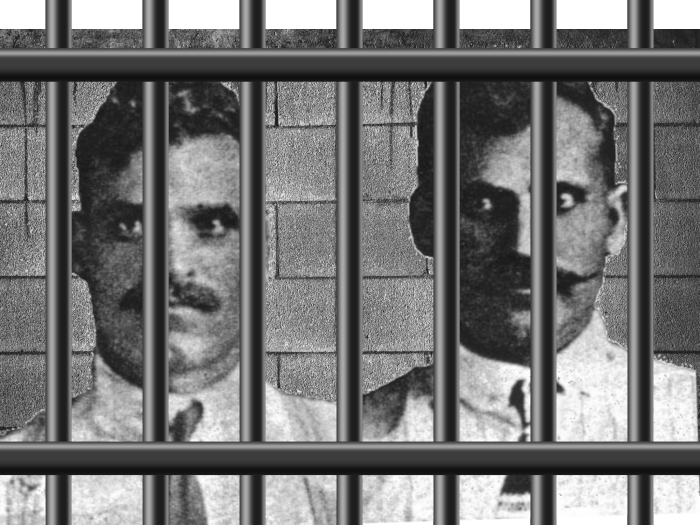


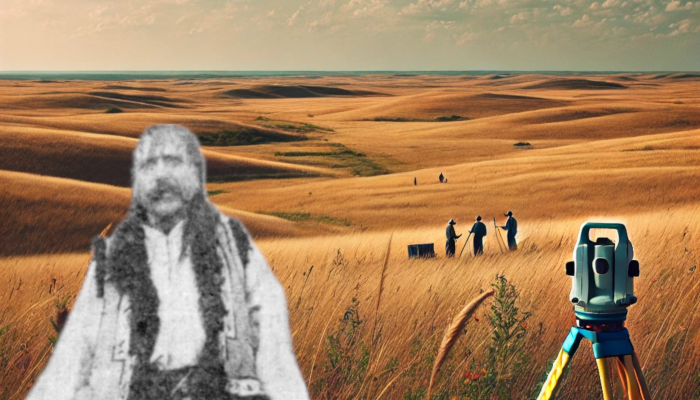
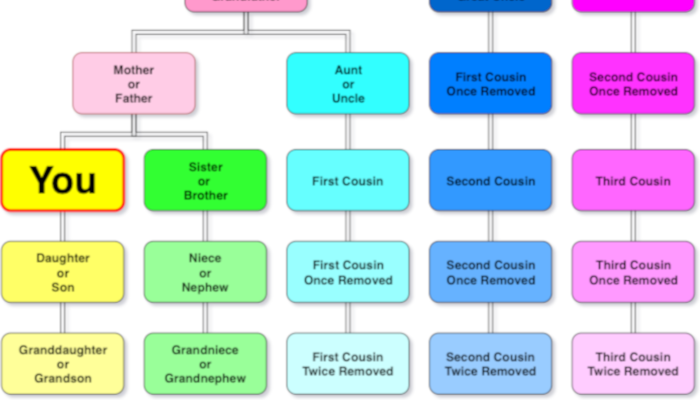
Mi -am pus întrebări ani de-a rândul ,, Oare , voi trăi sa ajung , sa cunosc istoricul ,fraților bunicului meu Ilie? ” Și am ajuns . Vă mulțumesc pentru munca depusa!